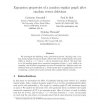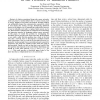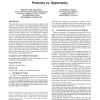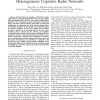64 search results - page 10 / 13 » Percolation in self-similar networks |
EJC
2008
13 years 7 months ago
2008
We investigate the following vertex percolation process. Starting with a random regular graph of constant degree, delete each vertex independently with probability p, where p = n-...
DIS
2009
Springer
13 years 11 months ago
2009
Springer
We address the problem of efficiently discovering the influential nodes in a social network under the susceptible/infected/susceptible (SIS) model, a diffusion model where nodes ar...
ICC
2008
IEEE
14 years 2 months ago
2008
IEEE
—In battery-constrained large-scale sensor networks, nodes are prone to random failures due to various reasons, such as energy depletion and hostile environment. Random failures ...
MOBICOM
2009
ACM
14 years 2 months ago
2009
ACM
We address the connectivity of large-scale ad hoc cognitive radio networks, where secondary users exploit channels temporarily and locally unused by primary users and the existenc...
GLOBECOM
2010
IEEE
13 years 5 months ago
2010
IEEE
Abstract--Characterizing the topology and therefore fundamental limits is a must to establish effective end-to-end cognitive radio networking (CRN). However, there lacks complete u...




